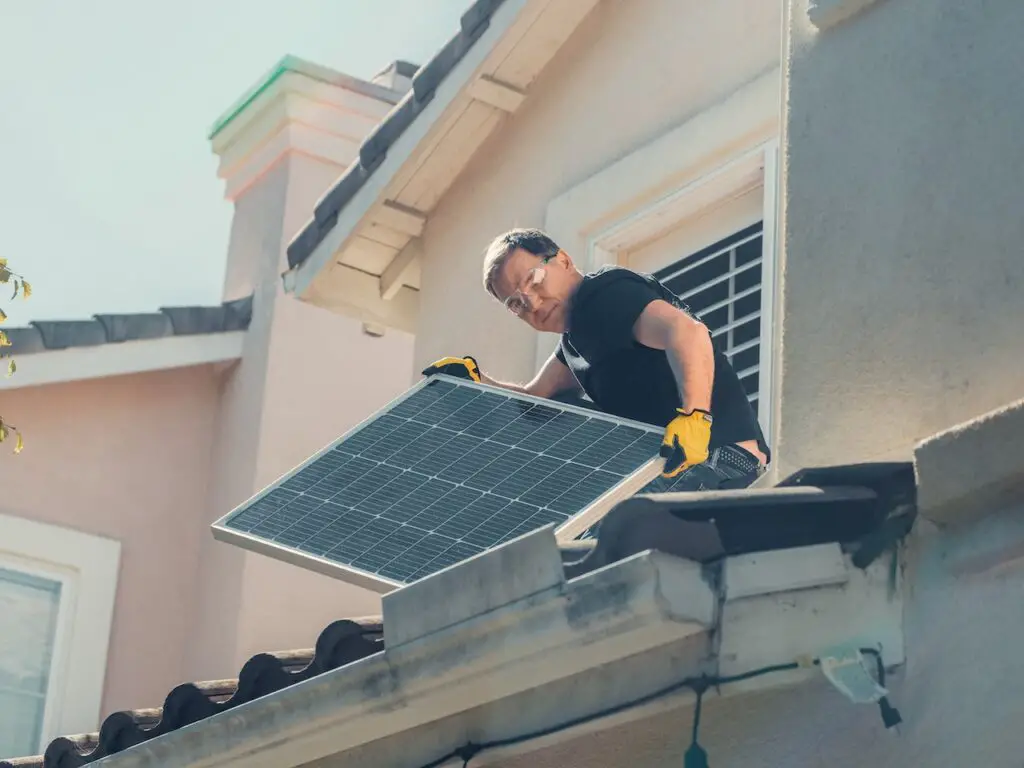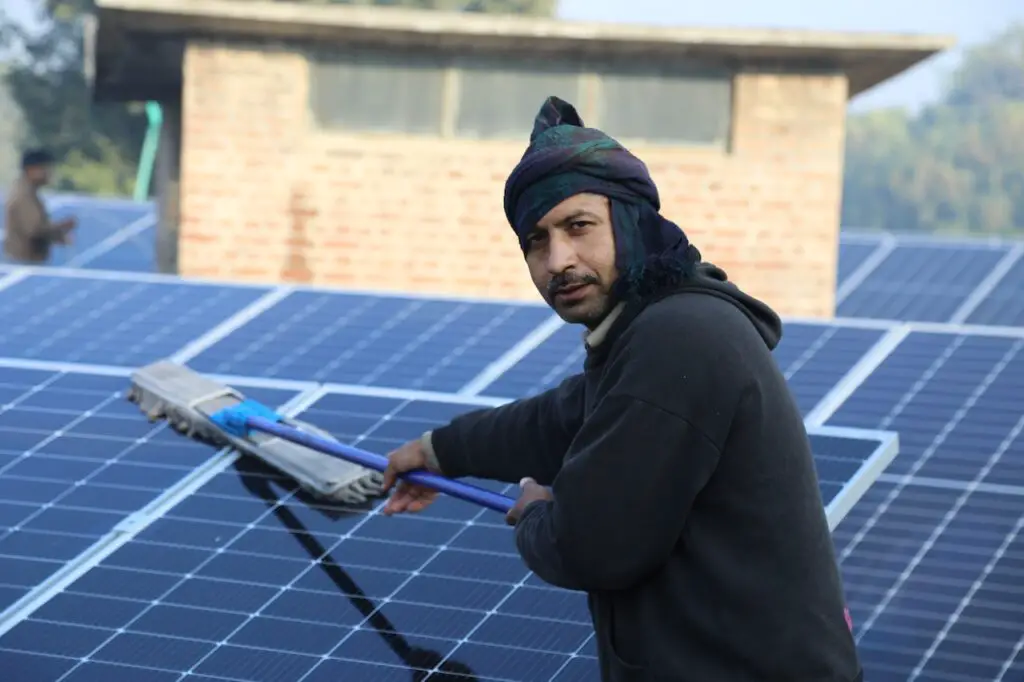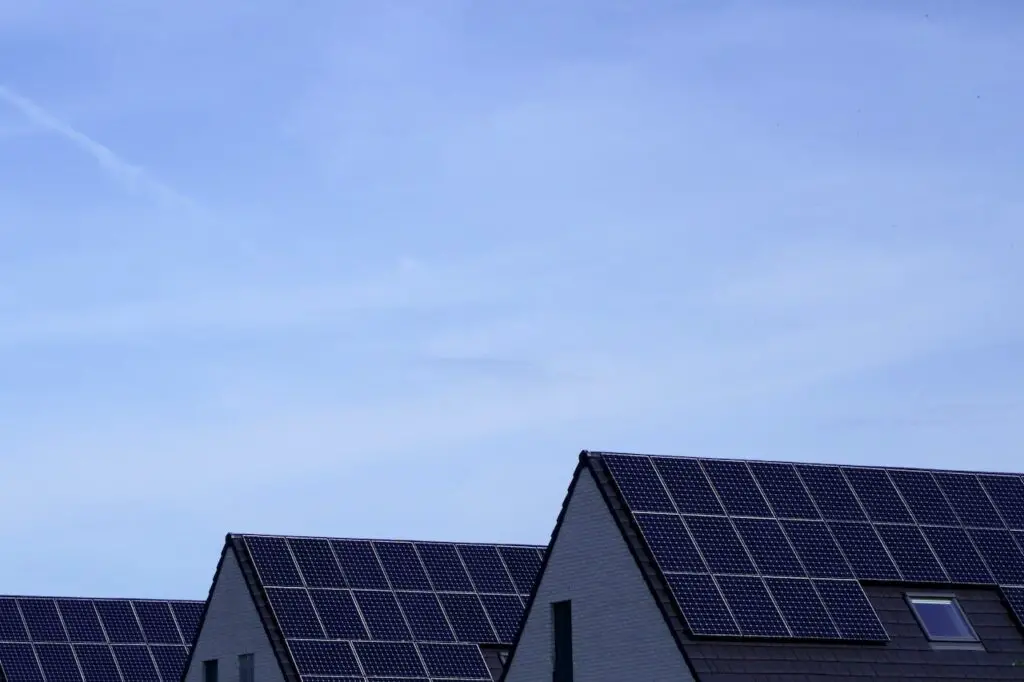When it comes to powering a home with solar energy, one of the most common questions is how many solar panels are needed. The answer to this question depends on several factors, including the size of the home, the amount of electricity used, and the location of the home.
According to EnergySage, an average home needs between 17 and 21 solar panels to fully offset utility bills with solar. However, this number can vary depending on individual panel specifications and geographic location. For example, homes in sunnier locations may require fewer solar panels than homes in areas with less sunlight.
It’s important to note that the number of solar panels needed to power a home can also depend on the homeowner’s goals. Some homeowners may want to completely eliminate their reliance on the grid, while others may only want to offset a portion of their energy usage.

Energy Consumption
When it comes to determining how many solar panels are needed to power a home, it’s important to understand the energy consumption of the household. Energy consumption refers to the amount of energy that is used by a household over a period of time, usually measured in kilowatt-hours (kWh).
Understanding Energy Consumption
There are several factors that can impact a household’s energy consumption, including:
- The number of people living in the home
- The size of the home
- The age of the home and its appliances
- The climate in which the home is located
According to the U.S. Energy Information Administration (EIA), the average household in the United States uses approximately 877 kWh of electricity per month, or 10,572 kWh per year. However, this number can vary widely depending on the factors mentioned above.
In order to accurately determine how many solar panels are needed to power a home, it’s important to calculate the household’s energy consumption over a 12-month period. This can be done by reviewing utility bills and determining the average monthly usage.
Solar Panel Basics
Types of Solar Panels
Solar panels come in three main types: monocrystalline, polycrystalline, and thin-film. Monocrystalline panels are made from a single crystal of silicon and are the most efficient, but also the most expensive. Polycrystalline panels are made from multiple silicon crystals and are less efficient but more affordable. Thin-film panels are made from a thin layer of photovoltaic material and are the least efficient but also the most affordable.
Solar Panel Efficiency
Solar panel efficiency refers to the amount of sunlight that a panel can convert into usable electricity. The efficiency of a solar panel is measured as a percentage of the total amount of sunlight that hits the panel. The higher the percentage, the more efficient the panel is.
Monocrystalline panels are generally the most efficient, with efficiency ratings of up to 22%, while polycrystalline panels have efficiency ratings of up to 18%. Thin-film panels have the lowest efficiency ratings, typically around 10%.
It’s important to note that the efficiency of a solar panel is not the only factor to consider when choosing a panel. Other factors, such as the size and wattage of the panel, as well as the amount of sunlight in your area, can also impact the performance of your solar system.
Ultimately, the best type of solar panel for your home will depend on your specific energy needs and budget.
Calculating Solar Panel Needs
Factors Affecting Solar Panel Needs
When calculating the number of solar panels needed to run a home, there are several factors to consider.
The size of the home, the number of occupants, and the energy consumption habits of the household are all important factors. Other factors that can affect solar panel needs include the climate, the angle and orientation of the roof, and the efficiency of the solar panels.
Calculating Energy Needs
To calculate the energy needs of a home, one must first determine the average monthly electricity usage. This can be done by reviewing past electricity bills or by using an online calculator.
Once the average monthly electricity usage is determined, it can be multiplied by the number of months in a year to get the annual electricity usage.
To determine the number of solar panels needed, the annual electricity usage can be divided by double the average electricity output of a single solar panel. The average electricity output of a solar panel can vary, but it is typically around 300 watts.
Therefore, if a household uses 10,000 kilowatt-hours (kWh) of electricity per year, they would need approximately 17 solar panels to meet their energy needs. It is important to note that the number of solar panels needed can vary depending on the efficiency of the solar panels and the climate of the area.
In areas with less sunlight, more solar panels may be needed to generate the same amount of electricity. Additionally, households that prioritize energy conservation and efficiency may be able to reduce their energy needs and require fewer solar panels.
Determining the Number of Solar Panels
When it comes to determining the number of solar panels needed to run a home, there are a few factors to consider. This section will cover the basics of solar panel sizing and other factors that can affect the number of solar panels needed.
Solar Panel Sizing
The size of the solar panel system needed for a home depends on the amount of electricity the home uses. To determine the size of the solar panel system needed, one can use the following formula:
| Step | Formula |
|---|---|
| Step 1 | Calculate the average daily electricity usage in kilowatt-hours (kWh). |
| Step 2 | Divide the average daily electricity usage by the number of peak sunlight hours per day to get the minimum system size required in kilowatts (kW). |
| Step 3 | Multiply the minimum system size by 1.25 to account for system losses and future energy needs. |
| Step 4 | Divide the system size by the wattage of the solar panels to determine the number of solar panels needed. |
Other Factors to Consider
Aside from solar panel sizing, there are other factors to consider when determining the number of solar panels needed to run a home. These factors include:
- The location of the home
- The orientation and tilt of the roof
- The efficiency of the solar panels
- The shading of the roof from trees or other buildings
- The time of day when electricity is used
All of these factors can affect the amount of electricity that can be generated by the solar panels and, therefore, the number of solar panels needed. It is important to consult with a solar installer to determine the optimal number of solar panels for a specific home.




